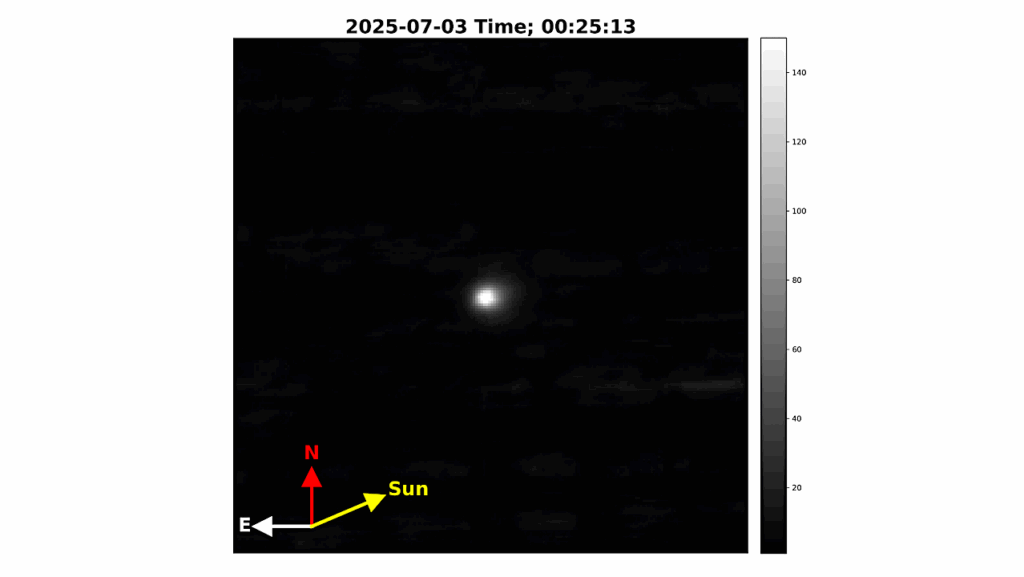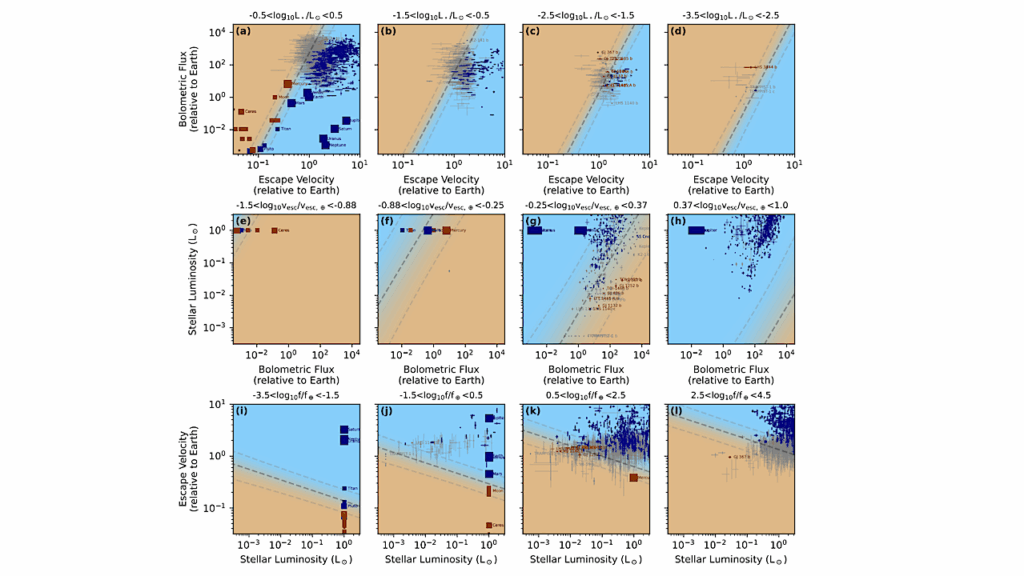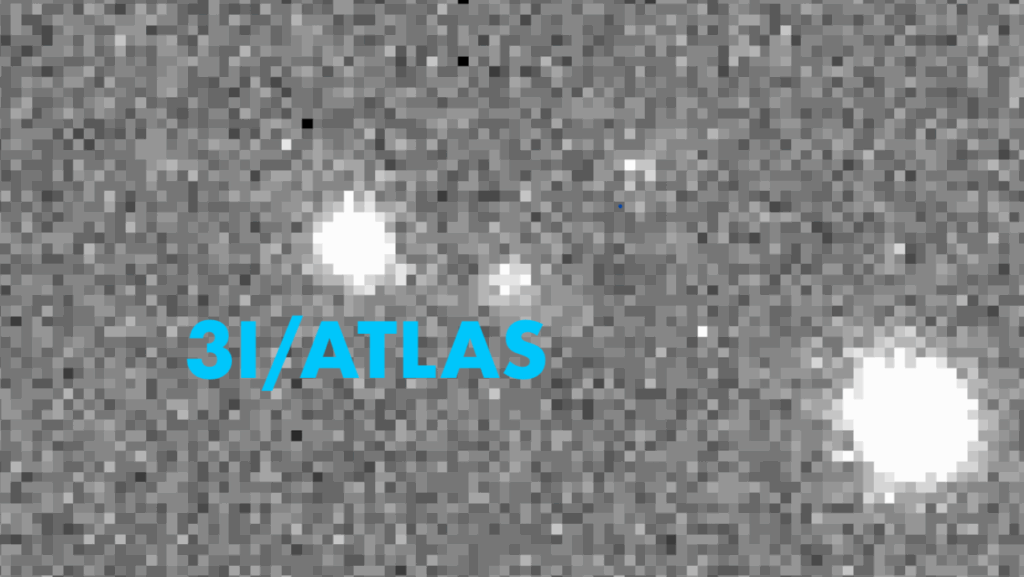NASA-led Study Sees Titan Glowing at Dusk and Dawn

New maps of Saturn’s moon Titan reveal large patches of trace gases shining brightly near the north and south poles.
Image: High in the atmosphere of Titan, large patches of two trace gases glow near the north pole, on the dusk side of the moon, and near the south pole, on the dawn side. Brighter colors indicate stronger signals from the two gases, HNC (left) and HC3N (right); red hues indicate less pronounced signals. Image Credit: NRAO/AUI/NSF
These regions are curiously shifted off the poles, to the east or west, so that dawn is breaking over the southern region while dusk is falling over the northern one.
The pair of patches was spotted by a NASA-led international team of researchers investigating the chemical make-up of Titan’s atmosphere.
“This is an unexpected and potentially groundbreaking discovery,” said Martin Cordiner, an astrochemist working at NASA’s Goddard Space Flight Center in Greenbelt, Maryland, and the lead author of the study. “These kinds of east-to-west variations have never been seen before in Titan’s atmospheric gases. Explaining their origin presents us with a fascinating new problem.”
The mapping comes from observations made by the Atacama Large Millimeter/submillimeter Array (ALMA), a network of high-precision antennas in Chile. At the wavelengths used by these antennas, the gas-rich areas in Titan’s atmosphere glowed brightly. And because of ALMA’s sensitivity, the researchers were able to obtain spatial maps of chemicals in Titan’s atmosphere from a “snapshot” observation that lasted less than three minutes.
Titan’s atmosphere has long been of interest because it acts as a chemical factory, using energy from the sun and Saturn’s magnetic field to produce a wide range of organic, or carbon-based, molecules. Studying this complex chemistry may provide insights into the properties of Earth’s very early atmosphere, which may have shared many chemical characteristics with present-day Titan.
In this study, the researchers focused on two organic molecules, hydrogen isocyanide (HNC) and cyanoacetylene (HC3N), that are formed in Titan’s atmosphere. At lower altitudes, the two molecules appear concentrated above Titan’s north and south poles. These findings are consistent with observations made by NASA’s Cassini spacecraft, which has found a cloud cap and high concentrations of some gases over whichever pole is experiencing winter on Titan.
The surprise came when the researchers compared the gas concentrations at different levels in the atmosphere. At the highest altitudes, the gas pockets appeared to be shifted away from the poles. These off-pole locations are unexpected because the fast-moving winds in Titan’s middle atmosphere move in an east-west direction, forming zones similar to Jupiter’s bands, though much less pronounced. Within each zone, the atmospheric gases should, for the most part, be thoroughly mixed. The researchers do not have an obvious explanation for these findings yet.
“It seems incredible that chemical mechanisms could be operating on rapid enough timescales to cause enhanced ‘pocket” in the observed molecules,” said Conor Nixon, a planetary scientist at Goddard and a coauthor of the paper, published online today in the Astrophysical Journal Letters. “We would expect the molecules to be quickly mixed around the globe by Titan’s winds.”
At the moment, the scientists are considering a number of potential explanations, including thermal effects, previously unknown patterns of atmospheric circulation, or the influence of Saturn’s powerful magnetic field, which extends far enough to engulf Titan.
Further observations are expected to improve the understanding of the atmosphere and ongoing processes on Titan and other objects throughout the solar system.
NASA’s Astrobiology Program supported this work through a grant to the Goddard Center for Astrobiology, a part of the NASA Astrobiology Institute. Additional funding came from NASA’s Planetary Atmospheres and Planetary Astronomy programs. ALMA, an international astronomy facility, is funded in Europe by the European Southern Observatory, in North America by the U.S. National Science Foundation in cooperation with the National Research Council of Canada and the National Science Council of Taiwan, and in East Asia by the National Institutes of Natural Sciences of Japan in cooperation with the Academia Sinica in Taiwan.








